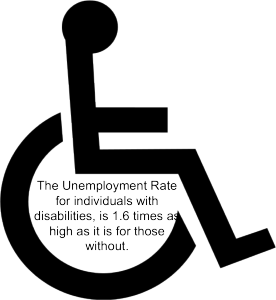
The doors need to be at least 36 inches wide, the corridors at least 48 inches wide and the desk needs to be at least 32 inches high for a wheelchair-bound person to be able to maneuver around an office, according to Uniform Federal Accessibility Standard.
Nationwide, 18 percent of individuals have a disability of some sort, census data shows. 9,000 of these individuals are students at CUNY, according to its Coalition of Disabled Students.
October is National Disability Employment Awareness Month; this year’s campaign is titled “A Strong Workforce is an Inclusive Workforce: What Can YOU Do?”
CUNY has a variety of programs and groups for disabled students including CUNY LEADS — Linking Employment, Academics and Disability Services — a comprehensive career-readiness program for students with disabilities.
Christopher Rosa, an assistant dean for student affairs at CUNY and a former director of services for students with disabilities at Queens College, is confined to a wheelchair because he suffers from muscular dystrophy, a disorder that results in weakened muscle tissue.
LEADS, Rosa said, “has positioned CUNY students with disabilities to achieve competitive employment at a rate of 70 percent; without the intervention of this program, the employment rate for New Yorkers with disabilities hovers around 30 percent.”
It is significantly more difficult for disabled individuals to get and keep a job than it is for a disability-free individual. In 2012, people with disabilities experienced an unemployed rate around 74 percent higher than people without, according to data from the Bureau of Labor Statistics.
The Americans with Disabilities Act of 1990 requires employers of more than 15 people to make accommodations for disabled individuals who are qualified for the position in question. To be considered under this bill, a person must have or have had a physical or mental impairment that limits one or more major life activities.
Since being passed 22 years ago, the workplace has advanced in terms of accommodation: wheelchair ramps, automatic doors, lower countertops and widened hallways have all become office features.
Nevertheless, in a Kessler Foundation and National Organization for Disabilities study, 73 percent of unemployed disabled individuals stated that they believed the number one reason they weren’t hired were their disabilities.
QC senior Alexander Garrett has just one leg, but doesn’t intend to let it hold him back in getting a job.
“While people may have preconceived notions about students with disabilities, nothing stops us from being as capable and able as [others] can be,” Garrett said.














